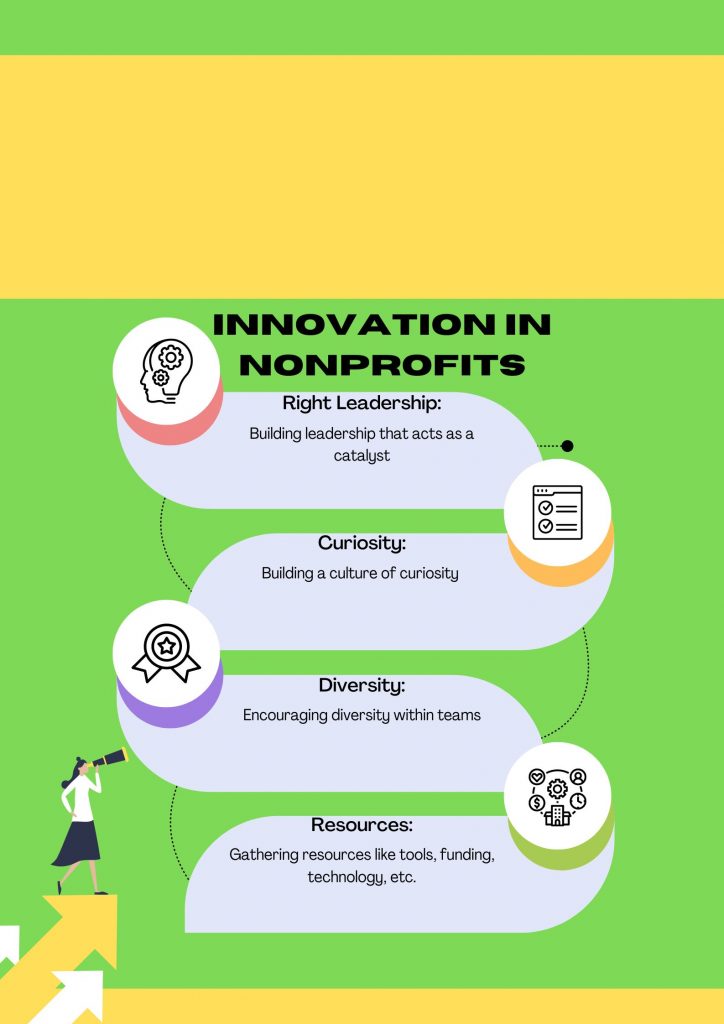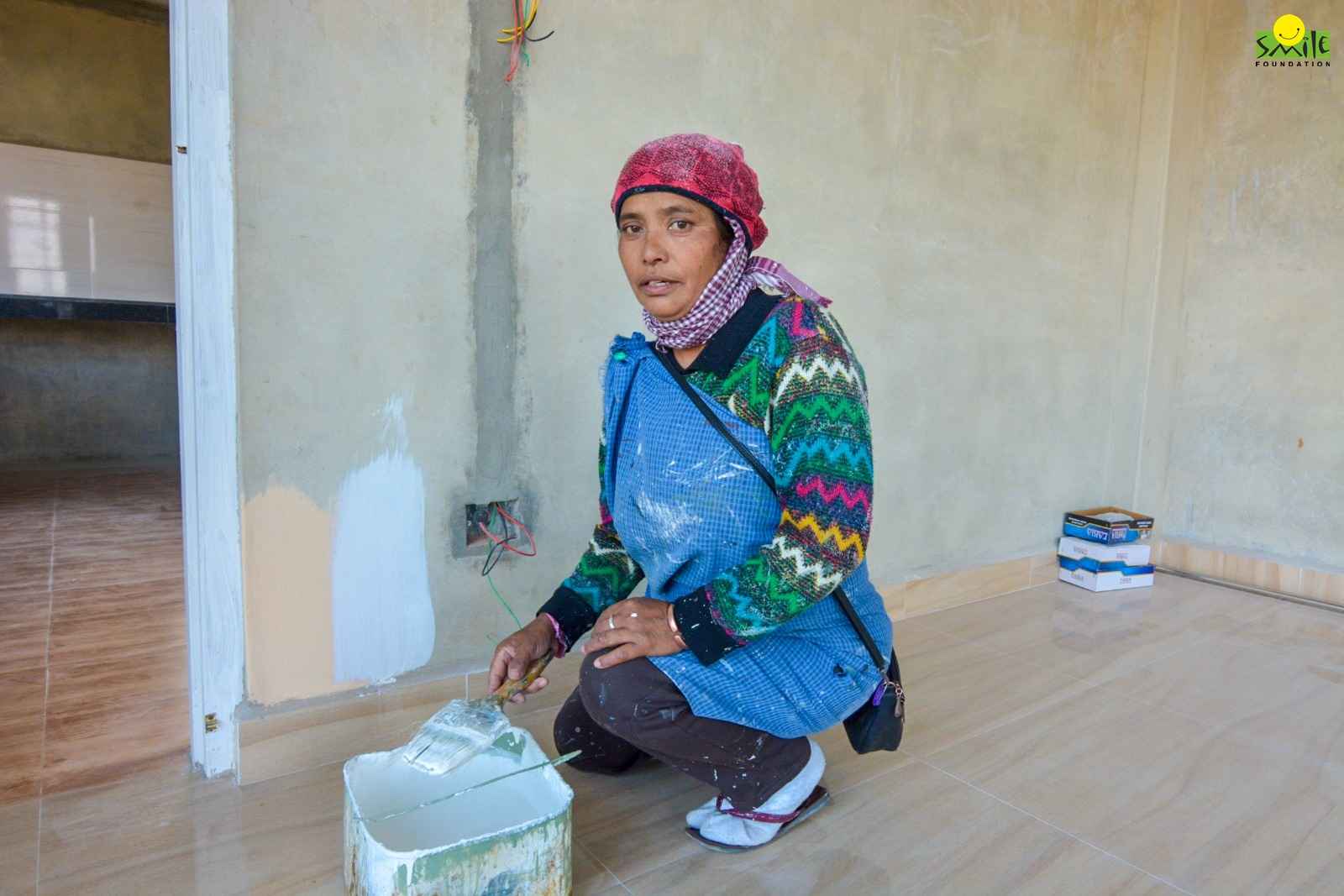Nonprofits are facing bigger and newer challenges in the post-pandemic world. While there are issues that are of critical importance and require the support of the nonprofit sector, the overall slowdown in the world economy has severely impacted funding opportunities. Nonprofits have innovation challenges and that is a big red flag to their thriving power.
Over and above, many nonprofits, especially in India, work at the grassroots. Therefore, they may follow a traditional approach to functioning. Some of these organisations are facing serious innovation challenges too.
However, the power of innovation cannot be denied. It is perhaps the most essential aspect of growth for any industry. When the Covid-19 pandemic took the world by surprise, many businesses had to innovate to stay afloat. Within months, and sometimes weeks, businesses made a transition to work-from-home (WFH) structure.
Companies also integrated digital technology into all their systems. Similarly, governments around the world used innovation to not just help people but also maintain the continuous supply of existing resources to the needy.
Innovation is not an alien word for most people. It has always been highlighted as an important aspect in every area. If you are a student, you are encouraged to innovate so that you can learn new things.
Companies expect their employees to innovate and drive better results. Governments innovate to provide better services to the people. Therefore, innovation is the key to sustained growth and transformation.
Experts opine that nonprofits do not innovate as much as for-profit organisations. The reasons for this may be many, but the challenges in innovation and creativity cannot be ignored anymore. Therefore, we must look at what innovation challenges actually mean to understand how it impacts non-profits.
Innovation Challenges in Today’s Age
There are various hurdles to innovation. To innovate is to bring change and many people are not comfortable with change. Therefore, one of the biggest challenges to innovation in any sector is rigid leadership. When the leadership is not open to new experiments, it brings rigidity to the structure. However, this rigidity can mean that organisations fail to adapt to changing conditions.
This rigidity also creates an overall culture which lacks innovation. Many nonprofits today are reeling from this problem. Once the leadership and the organisation’s culture choose the path of rigidity, the scope for innovation becomes extremely limited.
So, how can nonprofits overcome these challenges? The first step is to accept the importance of innovating. If we look around, we will find many examples of how innovation has helped anyone who held the vision to accept it. Start-ups across the world, including many in India, have used innovation to solve complex problems and build strong businesses.
In fact, technological innovation is helping us deal with some of the biggest challenges that we have faced. It was only through innovation that humankind was able to create a vaccine in the shortest-ever duration which helped in limiting the spread of Covid within a span of three years.
However, being innovative also means dealing with constant uncertainty. When you are experimenting with newer ways, there are chances that you can also fail on many occasions. But, not innovating means that you will not be able to catch up with the changing requirements of the world. Therefore, nonprofits cannot afford to stay behind in this area because they are entirely dependent on external funding and to be able to raise the funds, they need to innovate too.
How to Innovate?
A 2017 survey found that 80% of nonprofits were keen to innovate but only 40% were willing to take the risk of innovating. Such a lacuna in nonprofit innovation can make many organisations obsolete as they may not be able to address the changing aspirations of people. A survey has also found that many organisations working in the same manner to solve the same problem are rather inefficient.
An article in Stanford Social Innovation Review suggests six ways of developing this capacity to innovate. Following these steps may help nonprofits to overcome the social innovation challenge. The six ways, as recommended, are–
- Building leadership that acts as a catalyst for change and innovation. As already discussed above, if the leadership fails to create a culture of innovation, the organisation fails to experiment with new ways.
- Building a culture of curiosity where everyone is encouraged to share new ideas. This can help organisations because they can benefit immensely from the creative ideas of young people. This can also help in dealing with the ‘young innovators challenge’.
- Encouraging diversity within teams is also recommended to ensure that there is a healthy exchange of ideas.
- Maintaining porous boundaries so that people do not hesitate in approaching their seniors and sharing new ideas.
- Creating structures to process ideas, so that there is a proper way in which ideas can be discussed, tested, and implemented or rejected as per requirement.
- Gathering resources like tools, funding, technology, etc., which are essential to sustaining the culture of innovation. Implementation of new ideas requires creativity and it can only be done when the organisation has dedicated resources for the same.
So, these are some important suggestions that nonprofits can follow. The Boston Consulting Group also conducted research and found ways through which nonprofits can differentiate themselves and build an innovative culture.
It stated that the most important is to have a ‘shared purpose and definition’ because this provides a vision to everyone to innovate. Additionally, it emphasized the importance of having a viable structure and process which allows innovation.
Let’s Smash the Innovation Challenges in Nonprofits Now!
As a next step, BSG suggested that organisations should also look for newer ways of funding because more money can pave the way for better innovation capability. It also encourages organisations to build a strong monitoring and evaluation mechanism so that innovations can be analysed thoroughly and their impact measured.
Lastly, focusing on the people element, it said that it is important to encourage knowledge sharing. When non-profits share knowledge with each other and promote that within the organisation, they benefit immensely from it.
So, innovation can help nonprofits in building organisations which are at pace with the changing world. This way they can support more people and raise higher funds. Just like businesses, nonprofits should also inculcate innovation in all their processes. This will allow them to grow and also sustain that growth over a long period of time.
Smile Foundation places special value in reimagining itself time and again. We keep innovating ourselves in every way possible. Storytelling, creative programme activities, understanding the partners better, and more, we welcome innovation at every step of our growth process.









